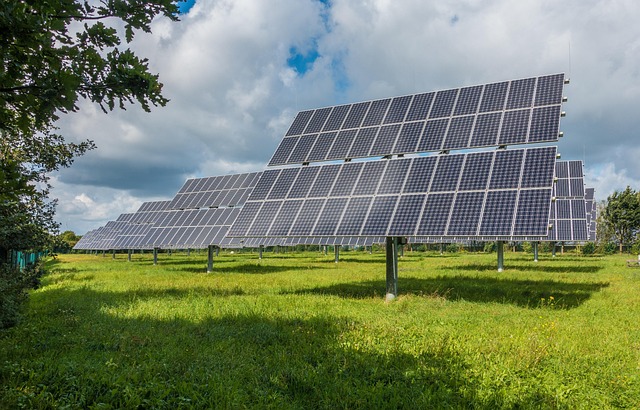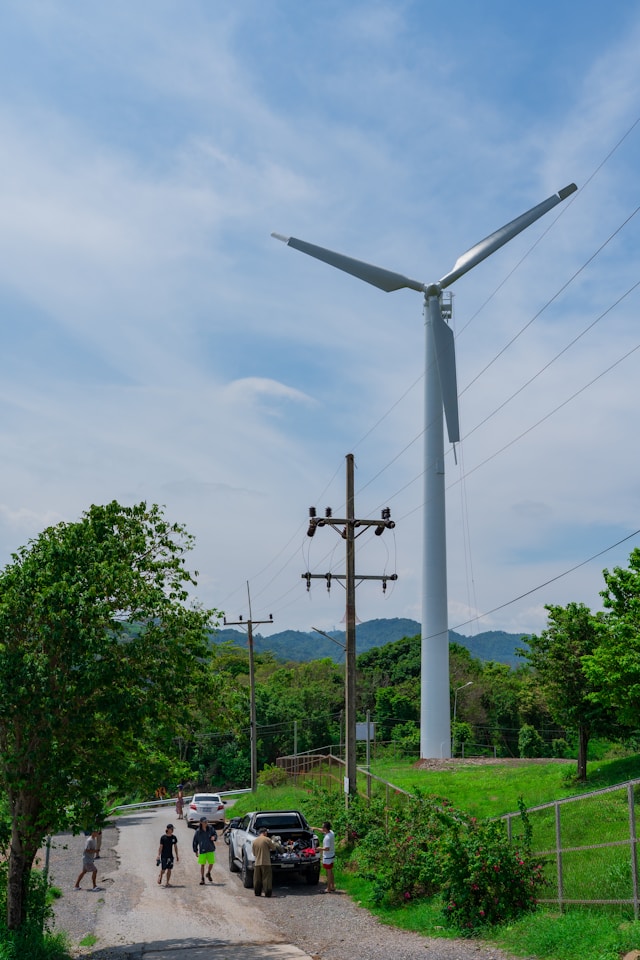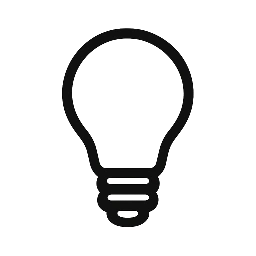In a world struggling with climate change, resource depletion and biodiversity loss, sustainable technology seems poised as a beacon of hope. These innovations – from renewable energy systems to eco-friendly materials – aren’t just about doing less harm; they’re about regenerating our planet and, at the same time, fuelling the growth of our economy. As the global temperature climbs and extreme weather events continue to increase, the need for greener solutions has never been so dire. The International Energy Agency (IEA) predicts that sustainable tech could help to reduce worldwide emissions by 70% by 2050 if aggressively scaled up.
This detailed blog post takes a deep dive into the topic of sustainable technology for a greener tomorrow, learning detailed insights on some innovations, their profound effects, and the way ahead. Whether you’re an environment advocate, a business leader looking to achieve ESG (Environmental, Social and Governance) compliance, or a mere curious citizen, you’ll come away with actionable insights to help contribute to a sustainable world. We’ll discuss the real world applications with data support and some of the highlights as to what these technologies are available today.
Understanding Sustainable Technology
Sustainable technology is a concept that is defined by tools, systems, and processes that are designed to meet the needs of the present generation without compromising the needs of future generations. It highlights the “triple bottom line,” or people, planet and profit. Rooted in the UN’s sustainable development goals (SDGs) and combines environmental stewardship with technology development.
Key Principles and Development.
- Environmental Focus: Reducing carbon footprints, preservation of resources and sustainability, and biodiversity.
- Innovation Drivers: Advances in AI, materials science, and digital twins accelerate development. The sector has been growing 8.5% a year between 2015-2022, as per Grand View Research, and according to BloombergNEF, investments exceeded $500 billion in 2023.
- Historical Milestones: From the 1970s solar panels to today’s CRISPR for eco-agriculture, sustainable tech has evolved from niche to necessity, spurred by the Paris Agreement (2015).
At a very fundamental level, sustainable tech involves decoupling economic growth from environmental degradation. For example, it is enabling “circular economies” where waste is a resource – in contrast to linear “take-make-dispose” models.


Key Sustainable Technologies Driving Change
Let’s take a look at five game-changing technologies. Each one focuses on solving particular planetary issues and also presents scalable solutions for industries and individuals.
1. Renewable Energy Sources: Using the Power of Nature
Renewables such as solar, wind and hydro are the mainstay of a low-carbon energy transition, and will displace fossil fuels from power generation with clean alternatives.
Advancements: Perovskite solar cells have 25%+ efficiency (up from 15% a decade ago), according to NREL. Offshore wind farms such as those found in the North Sea produce sufficient electricity for millions of homes.
Applications:
- Solar Integration: For example, in India, land is saved by solar on reservoirs and also output is boosted by 10-15% due to water cooling.
- Wind and Hydro: Micro-hydropower for remote villages provides off-grid electricity, empowering 800 million people without access as per World Bank.
- Hybrid Systems: Combining solar with agrivoltaics—panels over crops—doubles land use efficiency in arid regions.
Impact: Renewables could provide 90% of electricity by 2050 (IRENA) with the reduction of carbon dioxide emissions by 4.2 Gigatons annually. In the case of businesses, solar leases save energy prices by 20-30%.
Challenges such as intermittency (e.g. no sun at night) are debated through smart grids, to ultimately make renewables both reliable and inexpensive.
2. Energy Storage And Smart Grids: Saving The Sun And Wind
Batteries and grids provide energy that is available 24/7 and make variable energy into a stable energy source.
Breakthroughs: Lithium-iron-phosphate (LFP) batteries from CATL have a longer life and lower costs ($100/kWh in 2023). Flow batteries for grid-scale storage have a useful life of 20+ years.
Key Uses:
- EV and Home Storage: Tesla’s Powerwall stores the rooftop solar, EV providers offer the Tesla Powerwall, creating a path to energy independence, in which households have the ability to sell unused energy back to the grid using a program called net metering.
- Grid Optimization: Californians with the smart grids are using AI to balance loads to prevent blackouts and to incorporate 50% renewables, without disruption.
- Microgrids: In disaster-prone places like Puerto Rico have made it possible to right fallen grids with solar-battery microgrids that restore power in hours after a hurricane strikes.
Benefits: Storage has the potential to add $1.7 trillion to the global GDP in 2030 (McKinsey) and reduce peak demand costs by 40%. Environmentally, this lessens dependence on peaker stations that emit high CO2.
Recycling advancements mean that the batteries don’t become e-waste. 95 vols. Of materials can be reused.
3. Circular Economy Technologies: Trash to Treasure
These innovations close the loop to transform trash into treasure through recycling, upcycling and bio-based materials.
Innovations: AI-sorted recycling plants like AMP Robotics are reaching 95% accuracy – up from low 70% accuracy when sorting manually. Bioplastics made from algae break down in months not centuries.
Applications:
- 3D Printing with Recycled Materials: Adidas utilizes ocean plastics for Sneakers, Adidas expects to redirect the equivalent of 1 million bottles from landfills every year.
- Industrial Symbiosis: Example from Kalundborg, Denmark which redirects waste where steam from one factory powers another hence saving around €15 million a year.
- Digital Platforms: Apps such as Too Good To Go match food to the consumer. Decreased food waste by 30% in cities that participated in the scheme.
Global Reach: The circular economy could create $4.5 trillion worth of value by 2030 (Ellen MacArthur Foundation), while reducing the use of virgin resources by 28%.
This tech is a survivor: By bringing recycled inputs into the supply chain, operations continue to run smoothly in the event of disruptions.
4. Green AI and Data Centres: The Technology for Efficiency
AI, as perhaps the one most energy grasping, is being rethought around green concerns – maximizing processes and minimizing its footprint.
Developments: Using AI, Google’s DeepMind algorithm optimised energy consumption for cooling of data centres. 40% energy savings. Edge AI feeds data consumption on the spot which reduces transmission emissions.
Practical Implementations:
- Precision Agriculture: Drones and artificial intelligence in Brazil: Precision agriculture applied to agriculture in Brazil, Asian countries, and even the U.S. can lead to optimization of irrigation, thereby reducing water savings to 30% and increasing yields by 20%, which is important for food security.
- Carbon Footprint Tracking: – Monitoring and reducing emissions in real-time – Carbon Footprint Tracking Tools such as Microsoft’s Azure Sustainability Calculator can help businesses track and reduce their emissions in real-time.
- Biodiversity Monitoring: AI is used to analyze satellite imagery and detect deforestation which helps pursue reforestation in the Amazon.
Sustainability Gains: Green AI could help make the tech sector reduce its own 2-3% of world-wide emissions (comparable to aviation) by half by 2030 according to Nature study.
Ethical design is a way to ensure that AI is used in a way that promotes equity, for example, ensuring that low-income areas are prioritized for green retrofits.
5. Carbon Capture, Utilization, and Storage (CCUS): Reversing Emissions
CCUS captures CO2 from sources such as factories and stores it or puts it to use as a solution to the CO2 ensures a bridge to net-zero.
Progress: Climeworks’s Orca plant in Iceland captures 4,000 tons of CO2 a year and pumps it into basalt rock for permanent storage.
Versatile Applications:
- Direct Air Capture (DAC): Scales to gigaton levels; Occidental’s STRATOS project aims for 500,000 tons annually by 2025.
- Utilization: CO2 converted into fuels (e.g. by LanzaTech) or building materials such as carbon negative concrete.
- Industrial Integration: Cement plants in Norway capture 95% of emissions, creating low carbon products industrial integration within the customer.
Potential: CCUS would allow 15% of emissions abated by 2050 (IEA), with markets estimated at $4 trillion by 2050.
Costs are falling (from $600/ton to $100/ton), and it works given incentives such as the U.S. 45Q tax credit.
Benefits: A Triple Win for the Planet, People & Prosperity
Sustainable technology provides many benefits:
- Environmental: Reduces green house gases (IPCC minimum by 50%) in the adopting sectors hence maintaining the ecosystems by efficient use of resources.
- Economic: Creates 18 million jobs by 2030 (ILO) and saves $26 trillion in climate damages (Global Commission on the Economy and Climate).
- Social: Enhances health through reduced air pollution (7 million premature deaths per year, WHO) and equitable access, such as affordable solar in Africa.
For consumers, it means less in bills – LED lights and energy-efficient appliances reduce household energy use by 20%. Businesses obtain competitive advantages thanks to green branding. 78% of millennial customers show interest in green branding (Nielsen).
Challenges: Overcoming Barriers to Adoption
Despite the potential, there is a lack of progress however:
- High Initial Costs: Renewables pay off in the long term but upfront investments are a big deterrent to small players – subsidizes like the EU’s Green Deal helps.
- Infrastructure Gaps: In developing nations, grid upgrades lag; off-grid solutions bridge this.
- Policy and Regulation: Inconsistent standards slows process – global harmonization through COP agreements is key.
- Technological Limits: Scalability problems, such as rare earth dependencies in batteries, require R&D into alternatives (e.g. sodium-ion tech).
Solutions include public-private partnerships, education and innovation funds; Consumer demand creates changes – boycotting non-green products puts pressure on corporations.
Real World Case Studies: Real World Success Stories
- Denmark’s Wind Leadership: Denmark set the pace when it comes to wind; 50% of energy from wind = a power of 10 million homes, offshore wind farms also export their tech worldwide.
- Singapore’s Water Tech: NEWater recycles 40% of supply with the aid of advanced membranes. Singapore has turned scarcity into an abundance of water by recycling 40% of its supply from recycled water reprocessed with special membranes.
- Patagonia’s Circular Model: Gear Repairs and Recycling; Patagonia has taken a leadership position in circular economy to recover waste gear and create a closed loop by repairing and reselling old gear, creating a loyal, sustainable, green brand.
These cases show ROI: According to Denmark’s experience, Denmark’s economy is 2.5% more dynamic than EU averages after the renewable push.
Future Trends: What’s Next for Sustainable Tech
By 2030, expect inevitable convergence of AI-optimized CCUS, bioengineered materials, and space-based solar. Quantum computing will help speed up material discovery for improved batteries. The “net-zero” economy will be the predominant one, stabilized by blockchain for tracking green supply chains for transparency.
Bottom-line: Sustainable Tech: Seizing the Future for the Legacy of Tomorrow
Sustainable technology for a greener future isn’t an option, it’s a must. From renewables to power homes, to CCUS to clean our air, these innovations provide us with a roadmap to resilience and renewals. By adopting them, we protect the planet, realize more successful communities and make societies prosperous.Take the first step: Measure your carbon footprint, and tell us in the comments: Which eco-tech innovation are you most inspired by? Together we are designing a prosperous, green world.
Discover more from Tech Trend Insights
Subscribe to get the latest posts sent to your email.
